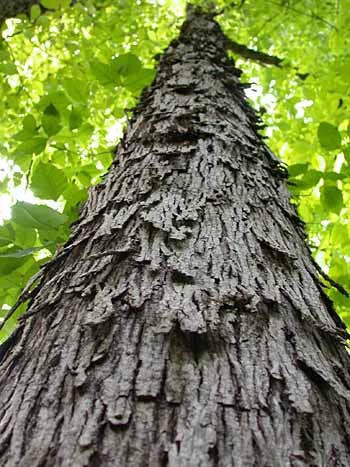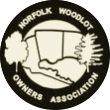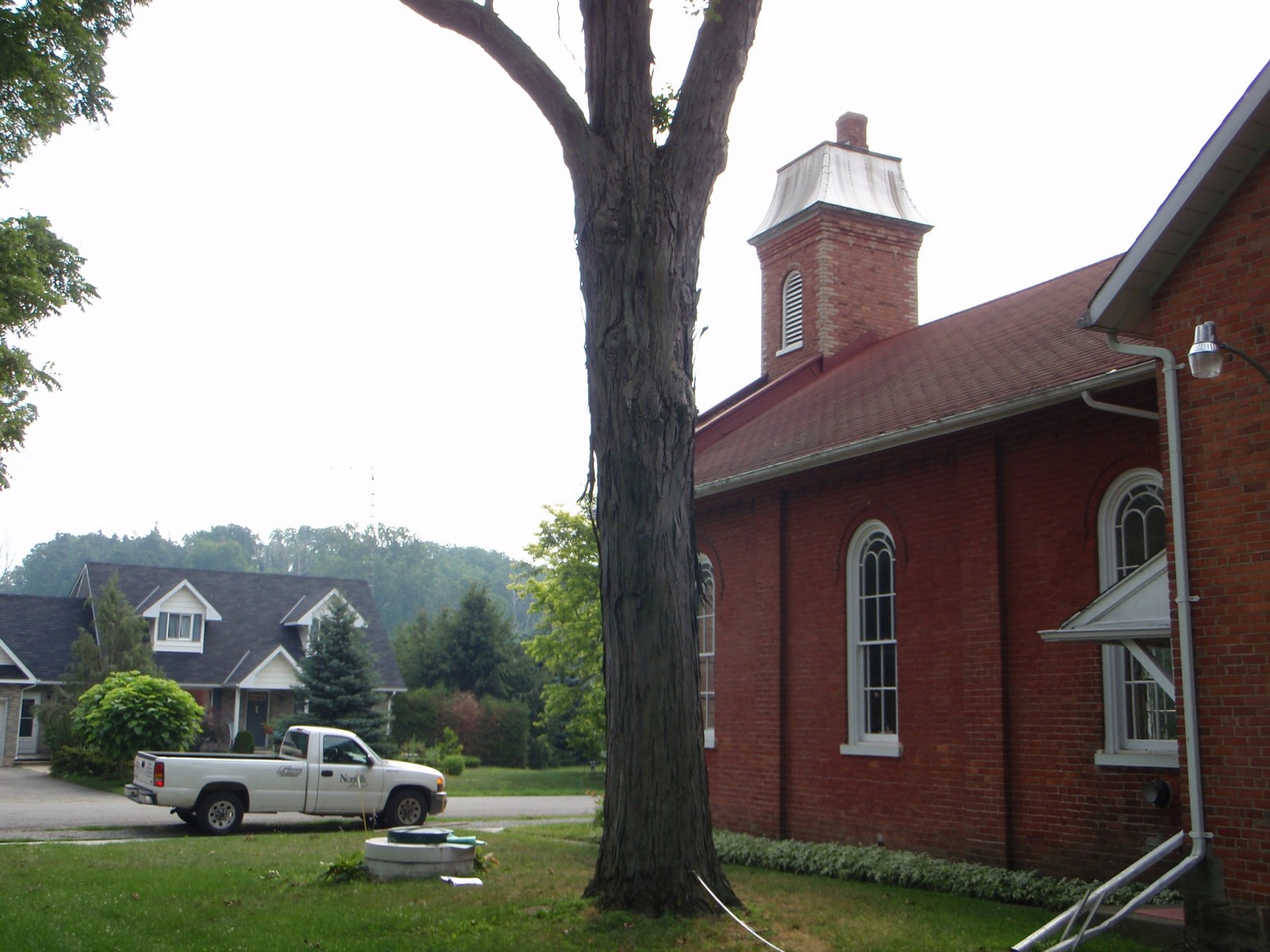Carya ovata
Owner: United Church c/o Gwen Booker
Nominator: Norfolk Environmental Stewardship Team
Height: 31.8 m (104 ft)
Diameter: 83.28 cm (32.8 in)
Circumference: 261.5 cm (103 in)
Description
The Shagbark Hickory is the most distinctive of all the hickories as it is easily recognized by its loose-plated bark. It can be found throughout most of the eastern United States as well as southern Quebec and Ontario. It is typically a minor component in forests that include oaks, other hickories, beech, sugar maple, and white pine. It is a medium-sized tree averaging heights of 21-24 m, occasionally reaching heights of 40 m. The tree develops a characteristic straight trunk, but there is a tendency for the main stem to fork at one-half to two-thirds of the tree height. It is classed as intermediate in shade tolerance; saplings persist under dense over story canopies for many years and respond rapidly when released. As with other hickories, the nuts it produces provide food for many wildlife species including squirrels, foxes, rabbits, black bear, wood ducks and wild turkey. Hickory fuelwood has a high heat value, burns evenly, and produces long-lasting steady heat; the charcoal gives food a hickory-smoked flavour. Hickory wood is known for its strength, toughness, and hardness. Dominant uses for hickory lumber are furniture, flooring and tool handles. It is also suitable for many specialty products such as ladder rungs, dowels, athletic goods, and gymnasium equipment. (Source: Silvics of North America)
Shagbark Hickory bark

